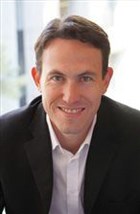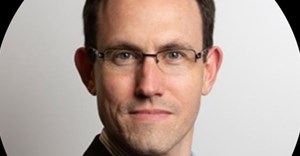Trending




 Sabre EMEA 2024 Awards: Razor PR, Retroviral top SA agenciesDanette Breitenbach
Sabre EMEA 2024 Awards: Razor PR, Retroviral top SA agenciesDanette Breitenbach
Elections 2024
Recruitment trends 2016
According to a recent edition of The Conference Board CEO Challenge, chief executives consider human capital their top challenge and priority. This has changed little in the past two years, with Human Capital being rated in the top three organisational challenges. To address these challenges, the preferred strategies of CEOs and human capital practitioners need to be aligned to ensure organisations plan effectively for current and future resourcing needs.
A solid employer brand can go a long way in attracting the right candidates, increasing retention post talent acquisition, reducing time-to-fill, and increase job acceptance rates. The increased importance of intangible assets (brand, reputation, etc) is largely because of the realisation that business results are the outcome of the efforts and skills of people within the business operating the right systems. If one couples this with aggressive growth to capitalise on global markets and cost cutting to improve bottom line results, you have a formula that demands a shift in talent management internally, and a war on talent externally.
It all starts with talent acquisition
In the last two years, there has been a drastic upshift in workforce planning, on the back of retrenchments, restructurings, recruitment shortages, and high turnover. Two of these might seem contradictory, but the turnover is the result of the movement caused by other companies' restructuring programmes. Talent pipelines and talent communities are on the rise across the globe, as workforce planning, supply-demand forecasting, and leadership development become increasingly important human capital planning metrics.
Despite the increasing use of social media to obtain candidates, recruitment agencies globally have seen an increase in the number of roles they are being sought after to fill. One of the main reasons remains that many strong candidates have resumes that don't tell the whole story. As a result, experts who review and put forward the top selection of candidates and format them for ease of reference is still preferred by busy HR practitioners. This, added to the sourcing of scare skills roles and top talent not always actively looking, makes recruiters' networks highly sought after.

The candidate landscape is changing rapidly too, especially among top candidates where a one-size fits all approach no longer works. Similar to executive level searches, a more unique and personalised recruitment process is expected by candidates. Such customisation cannot be done for every role and every position, meaning that talent acquisitions executives will focus on the roles that have the greatest business impact.
The massive candidate pool available in the marketplace isn't being capitalised on as much as it could be, largely because organisations continue to focus on 'passive recruiting' - only looking for talent when a position needs to be filled. Many organisations globally are now moving forward towards 'proactive recruiting' and ensuring their talent pool is full at all times. In practice, human recourses departments often fall short on this and only start looking when roles are critical to fill - often waiting months to find the right candidate for roles that are desperately needed by the hiring managers. What is more, HR needs to focus on progress rather than process and enhance turnaround times to ensure they do not lose the best talent - which will move off the market.
At present, many large organisations are taking up to two weeks simply to review CVs, where others are able to complete an entire recruitment cycle through to offer making, in the time it takes others to review a shortlist of candidates. The result of this is a significant loss of top talent that moves to organisations that are more responsive and progressive in their recruitment and HR practices.
With the proliferation of job postings on social media, candidates can only apply for active roles, limiting the scope of talent acquisition. Recruitment consultancies have talent databases in specific fields, allowing positions to be filled quickly, but also to scan the landscape for future talent, or people who a company should have on their radar. For example, VMA Group has over 65,000 pre-screened candidates in the marketing and communication space, both actively and passively searching across multiple geographies.
The July 2015 issue of Harvard Business Review published an article titled, 'Why We Love to Hate HR ...and What HR Can Do About It'. It stated that 'Recent complaints about the HR function have touched a nerve in a large, sympathetic audience, particularly in the United States. The most vocal critics say that HR managers focus too much on "administrivia" and lack vision and strategic insight.' It goes on to suggest that 'One of traditional HR's biggest difficulties has been supporting business strategy, because it's such a moving target these days. Companies seldom have longterm plans with straightforward talent requirements. Instead they generate streams of projects and initiatives to address successive needs'.
How can HR bring the long term view back into organisations? 'By reconciling it with the immediate pressures that businesses face, which those one-at-a-time projects are designed to address.' It goes on to remind us that 'tech companies such as Google, Microsoft, and Apple are now on the front lines of HR innovation, largely because they have an acute need for specialised talent. Human capital is practically their only major asset; talent is in short supply; and competitors are eager to lure employees away. There's been some creative HR thinking in financial services as well, to predict and ward off unethical behaviour. JPMorgan, for instance, is using an algorithm to identify employees who are likely to break the rules'.
Organisations simply cannot afford to take five months to find the right replacement for a management level position in the current macroeconomic climate. HR is central and critical to organisational progress, and as such also needs to be flexible and adaptable to the changing needs of business, including being responsive to evolving dynamics within an organisation.












